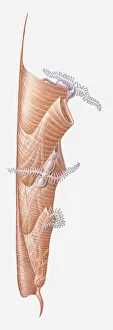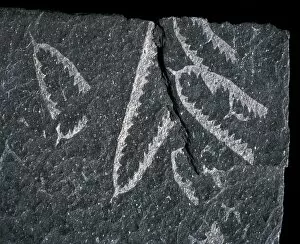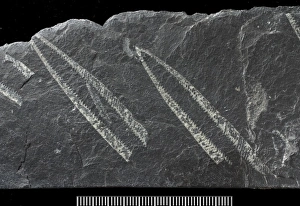Graptolite Collection
"Unveiling the Ancient World: A Glimpse into Graptolite Fossils" Step back in time with these antique engraving illustrations
All Professionally Made to Order for Quick Shipping
"Unveiling the Ancient World: A Glimpse into Graptolite Fossils" Step back in time with these antique engraving illustrations, showcasing the fascinating world of Paleozoic fossils. Among them, graptolites take center stage, offering a glimpse into their colonies during the Cambrian-Carboniferous period. Delicate and intricate, Tetragraptus graptolite fossils rest upon square brown rocks from the early Ordovician era. Their presence serves as a testament to life's resilience throughout history. Impressions on dark rocks reveal Orthograptus graptolite fossils from the late-mid Ordovician era. These enigmatic imprints hint at ancient underwater ecosystems that thrived millions of years ago. Phyllograptus graptolite fossils transport us further back to the early to mid-Ordovician era. Preserved within rock layers, they offer clues about Earth's past environments and evolution. Retiolites graptolite fossils found on shale unveil secrets from the Silurian era. These remnants provide insights into marine life during this transformative period in Earth's history. Monograptus graptolites leave their mark in spiral shapes upon black rocks—a mesmerizing sight that captivates both scientists and enthusiasts alike. Loganograptus graptolite fossils emerge from dark brown rocks dating back to the early Ordovician era. Each fossil tells its own story, contributing to our understanding of prehistoric times. Expansograptus leaves ridged shapes etched onto red, dark brown, and light brown rocks—an artistic display created by nature itself—reminding us of Earth's ever-changing landscapes over time. Zooming in on Didymograptus grapatolites reveals their intricate details up close—a reminder of how even small organisms can hold great significance when piecing together Earth's geological puzzle.



















